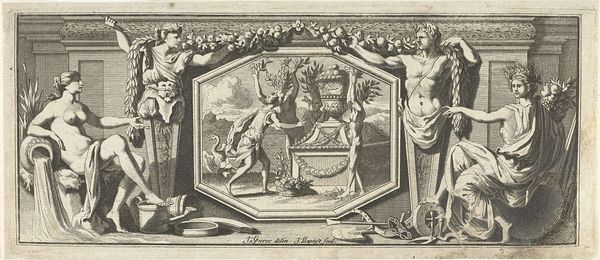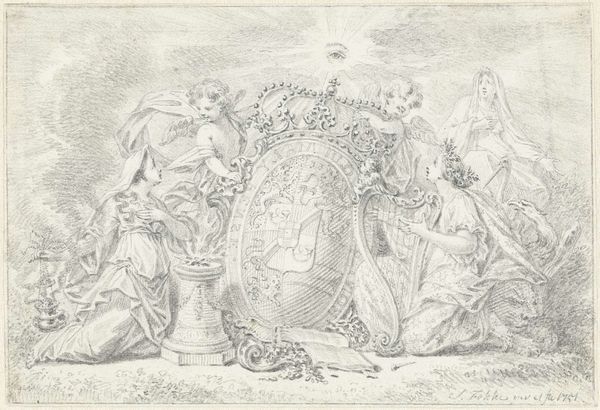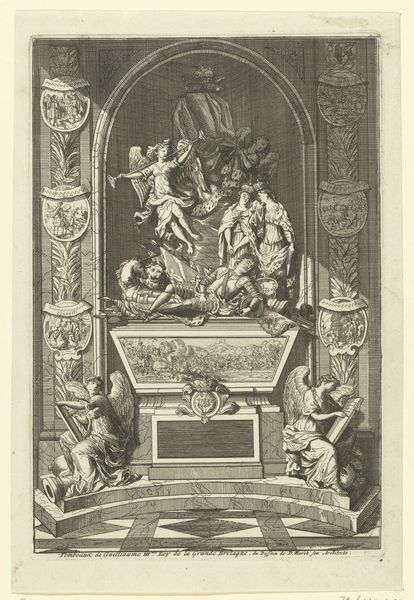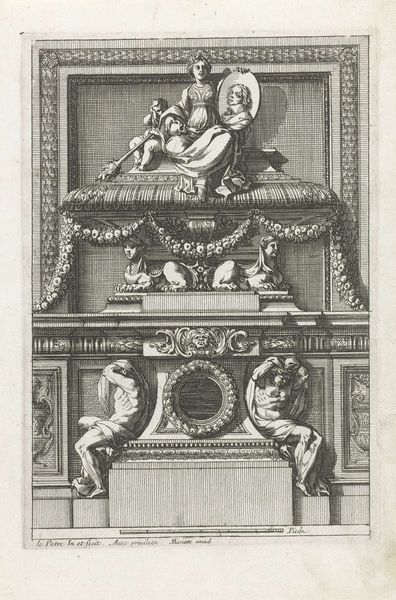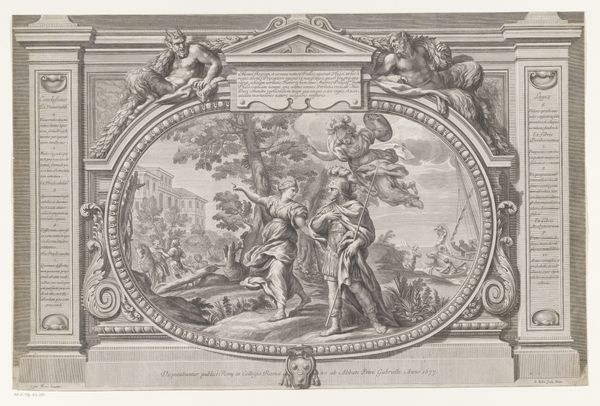
print, engraving
#
allegory
#
baroque
# print
#
pen illustration
#
old engraving style
#
figuration
#
line
#
history-painting
#
academic-art
#
engraving
#
miniature
Dimensions: height 70 mm, width 100 mm
Copyright: Rijks Museum: Open Domain
Curator: Before us, we have a rather intriguing piece from 1752 titled "Allegorie op het overlijden van prins Willem IV," or "Allegory on the Death of Prince William IV." It's an engraving by Jacob Folkema currently residing in the Rijksmuseum. Editor: My immediate reaction is… heavy. So much detail packed into a small space; the weight of grief feels almost tangible through the rigid lines of the engraving. Curator: Absolutely. As the title suggests, the print allegorically commemorates the passing of Prince William IV. Observe the figure of William kneeling in the clouds surrounded by divine light; he has ascended. The virtues Faith and Prudence attend on either side. Editor: Note also that grieving figure of the Dutch Maiden at the base, resting upon the shield of the Dutch Republic. The overall composition really reinforces established hierarchies, even in mourning. Curator: Yes, the iconography adheres to a specific visual language. Look at the inclusion of skulls and bones, vanitas symbols intended to evoke a meditation on mortality. Consider also the open book, symbolizing knowledge or scripture; the extinguished flame, an iconographic representation of life coming to an end. The symbolic order communicates far more than simple grief; it gestures at enduring virtue, divine approval, and the acceptance of fate. Editor: The academic style feels purposeful, designed to reinforce power structures during a moment of transition. While mourning, this imagery reinforces stability. I can't help but notice that the Dutch maiden isn't merely sad; she seems almost… defeated. This image speaks volumes about the pressures on the Dutch Republic at the time. Curator: An excellent observation! The Dutch Maiden is, indeed, burdened. And it's important to recall that symbols, over time, develop and accrue additional meanings. In the baroque era, a weeping maiden was expected, and the intention might have been to elicit compassion. In our current era, we see not simply bereavement, but possible commentaries on power and vulnerability. Editor: I concur; these historical images exist not just as relics but as active participants in current dialogues. This print serves not only as a historical record but also as an active canvas upon which to examine historical hegemonies. Curator: Well, it's been a powerful exercise of reflecting on not only how imagery of death persists in the cultural memory, but also how its reception has morphed with cultural evolution. Editor: Indeed, viewing the print reminds us that representations of national tragedy are always complex negotiations between genuine sentiment and displays of continued national resolve.
Comments
No comments
Be the first to comment and join the conversation on the ultimate creative platform.




